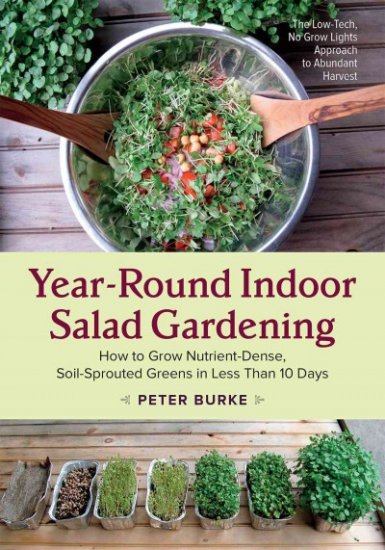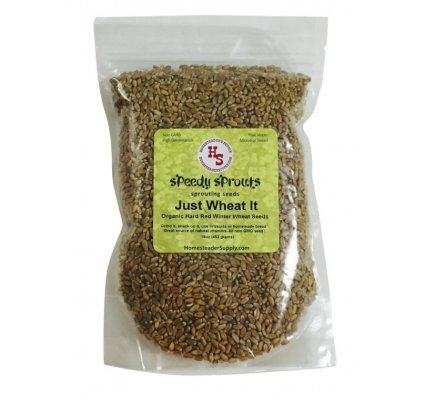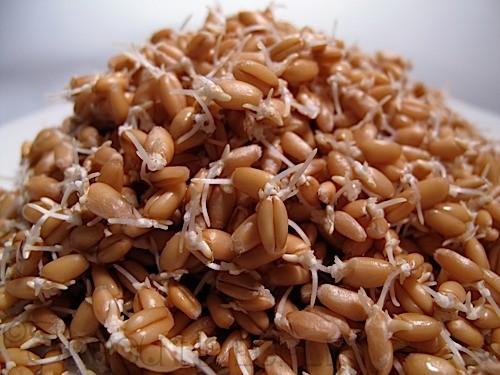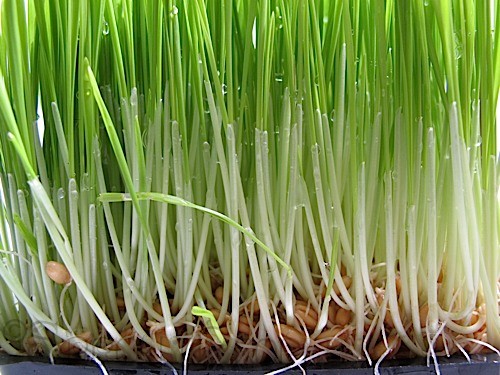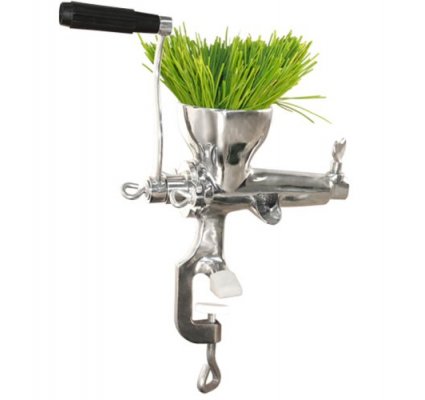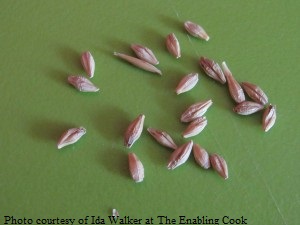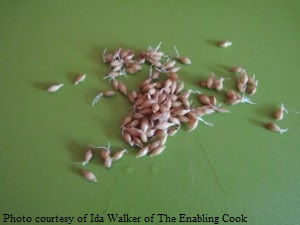Year-Round Indoor Salad Gardening: How to Grow Nutrient-Dense, Soil-Sprouted Greens in Less Than 10 Days by Peter Burke
Published in 2015, 192 pages
Get ready for a low-tech, no grow-lights approach to an abundant harvest of microgreens!
This book shows how you can grow all the fresh salad greens you need for the winter months (or throughout the entire year) with no lights, no pumps, and no greenhouse. All you need is a cupboard and a windowsill.
Longtime gardener Peter Burke was tired of the growing season ending with the first frost. Due to his busy work schedule and family life, he didn’t have the time or desire to bother with high-input grow lights or greenhouses. Most techniques for growing what are commonly referred to as microgreens left him feeling overwhelmed and uninterested. So, he set out to find a simpler way to grow salad greens for his family indoors.
After some research and diligent experimentation, Burke discovered that not only was it possible to grow nutrient-packed microgreens indoors, but it was easy, too! He didn’t even need a south-facing window. And he already had most of the necessary supplies sitting in his pantry. His result: healthy, homegrown microgreens at a fraction of the cost of buying them at the market. His secret: starting them in the dark!
Burke refers to sprouted seeds grown in soil as opposed to jars as “soil sprouts.” His method encourages a long stem without expansive roots, and provides delicious salad greens in just seven to ten days–much earlier, and with a lot less work, than any other growing method. Indeed, of all the ways of growing immature greens, Burke’s is the easiest and most productive technique.
So, forget about grow lights and heat lamps! This book is a revolutionary and inviting guide for both first-time and experienced gardeners in rural or urban environments. All you need is a windowsill or two. In fact, Burke has grown up to six pounds of greens per day using just the windowsills in his kitchen!
Year-Round Indoor Salad Gardening offers detailed, step-by-step instructions to mastering this method. It’s so easy, it’s impossible to fail! This book tells you what supplies you need to have on hand, including tools and accessories, seeds and greens varieties, soil and compost, trays and planters, and shelving. It also covers harvest and storage, recipes, scaling up to serve local markets, and much more.

